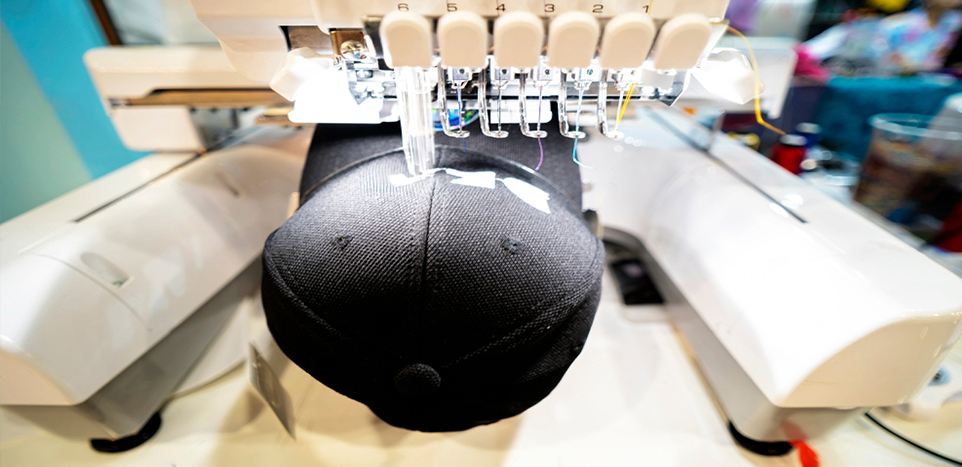Embroidery Digitizing for Caps and Hats: Challenges and Solutions
Embroidery has long been a cherished art form, transforming ordinary textiles into exquisite pieces of creativity. With the advent of technology, embroidery digitizing has taken the industry by storm, enabling intricate designs to be translated into stitches with unparalleled precision. One specific area where embroidery digitizing has gained immense popularity is in the realm of caps and hats. However, this unique canvas presents its own set of challenges and requires innovative solutions to ensure the quality and aesthetics of the final product. In this article, we will delve into the world of embroidery digitizing for caps and hats, exploring the challenges that digitizers face and the solutions that lead to exceptional results.
Challenges in Embroidery Digitizing for Caps and Hats:
Embroidery digitizing software plays a pivotal role in transforming intricate designs into beautiful embroidered patterns on various textiles, including caps and hats. However, the unique nature of these items presents specific challenges that digitizing software must address to ensure high-quality and accurate embroidery results. Here are some of the key challenges faced by embroidery digitizing software when working with caps and hats:
1. Curved Surfaces and Limited Area:
Caps and hats have curved surfaces and limited embroidery areas compared to flat fabrics. Digitizing software needs to accommodate these curved contours while ensuring that the design remains proportional, clear, and visually appealing. The software should provide tools to adapt the design to fit the curvature of the cap without distorting its elements.
2. Precise Placement:
Achieving precise design placement on caps and hats is crucial to avoid misalignment and ensure a professional look. The software must allow digitizers to accurately position the design on the cap's surface, considering factors like the cap's crown, brim, and sides. This requires tools for adjusting position, rotation, and scale with precision.
3. Stitch Density and Thread Tension:
Controlling stitch density and thread tension is vital to prevent issues such as puckering, gaps, or overly raised stitches. The digitizing software should offer options to adjust stitch density according to the cap's fabric type and thickness. It should also help in simulating the embroidery process to visualise how the design will stitch out, allowing digitizers to identify potential density-related issues.
4. Underlay Techniques:
Underlay stitches provide stability to the fabric and ensure that the subsequent stitches lie flat and uniform. However, different cap materials and textures require specific underlay techniques. The software should offer a range of underlay options, allowing digitizers to choose the most appropriate type for the fabric, ensuring proper coverage and preventing distortion.
5. Fine Detail Handling:
Caps and hats often feature intricate designs and fine details. The software needs to accurately translate these details into embroidery stitches while maintaining clarity and definition. This involves tools for creating small stitches, managing stitch angles, and ensuring that delicate elements are faithfully represented.
6. Colour Management:
Caps and hats may have limited colour space compared to larger garments. Embroidery Digitizing software should provide efficient colour management tools that allow for precise colour matching and easy thread selection. This ensures that the final embroidery captures the intended colour scheme accurately.

7. Specialty Embroidery Techniques:
Caps and hats may require specialty techniques like 3D puff embroidery or appliqué. The software should support these techniques with dedicated features and settings. For example, 3D puff embroidery involves raised stitches that give a three-dimensional effect, and the software should allow for adjusting stitch heights to achieve the desired puffiness.
8. Embroidery Machine Compatibility:
Caps and hats are often embroidered using specific machines designed for these items. The software should provide compatibility options for various embroidery machine formats to ensure that the digitized design can be seamlessly transferred and embroidered without compatibility issues.
9. Design Optimization:
Due to the limited space on caps and hats, some design elements may need to be simplified or adjusted for optimal embroidery results. The software should offer tools for design optimization, allowing digitizers to maintain the essence of the design while ensuring that it translates well onto the cap's surface.
Innovations in Cap and Hat Embroidery Digitizing
1. 3D Embroidery Digitizing:
To cater to the curved surfaces of caps and hats, 3D embroidery digitizing has emerged as a groundbreaking solution. This technique involves adjusting the design's stitches and angles to match the curvature of the fabric accurately. With specialised software, digitizers can visualise the design's appearance from various angles, ensuring a perfect fit once embroidere.

2. Advanced Simulation Software:
Simulation software has become an indispensable tool for cap and hat embroidery digitizing. Digitizers can simulate the entire embroidery process virtually, including design placement, thread path, and stitch density. This technology allows them to identify potential issues and make necessary adjustments before the actual embroidery begins, reducing wastage and ensuring top-tier results.
Conclusion
Embroidery digitizing for caps and hats presents a unique set of challenges that demand creative solutions and technical expertise. Overcoming these challenges requires a deep understanding of fabric properties, digitizing techniques, and the innovative tools available in the industry. Through customization, testing, and leveraging cutting-edge technology, digitizers can create embroidery designs that not only meet but exceed expectations.


0 Comments